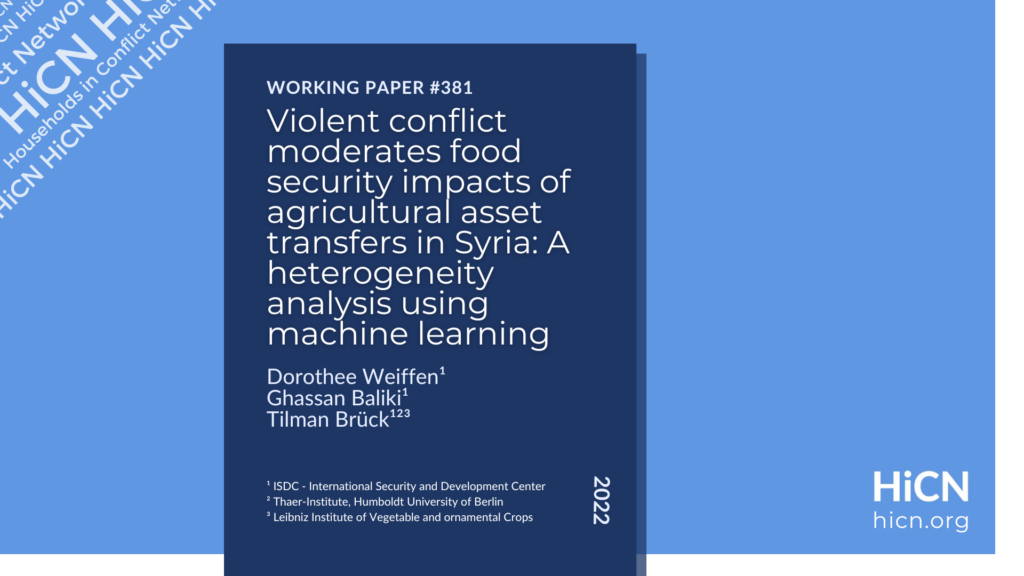
Agricultural interventions are one of the key policy tools to strengthen the food security of households living in conflict settings. Yet, given the complex nature of conflict-affected settings, existing theories of change might not hold, leading to misinterpretation of the significance and magnitude of these impacts. How contextual factors, including exposure to conflict intensity, shape treatment effects remain broadly unconfirmed. To address this research gap, we apply an honest causal forest algorithm to analyse the short-term impacts of an agricultural asset transfer on food security. Using a quasi-experimental panel dataset in Syria, comparing treatment and control households two years after receiving support, we first estimate the average treatment effect, and then we examine how contextual factors, particularly conflict, shape treatment heterogeneity. Our results show that agricultural asset transfers significantly improve food security in the short-term. Moreover, exposure to conflict intensity plays a key role in determining impact size. We find that households living in moderately affected conflict areas benefited significantly from the agricultural intervention and improved their food security by up to 14.4%, while those living in no or high conflict areas did not. The positive effects were particularly strong for female–headed households. Our findings provide new insights on how violent conflict determines how households benefit from and respond to agricultural programming. This underscores the need to move away from one-size-fits-all agricultural support in difficult settings towards designing conflict-sensitive and inclusive interventions to ensure that no households are left behind.